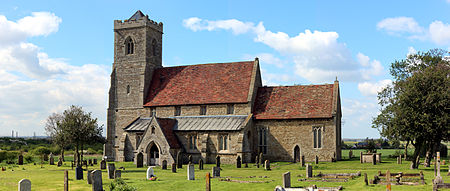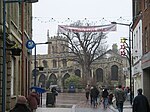St Andrew's Church, Woodwalton
12th-century church buildings in England13th-century church buildings in England14th-century church buildings in England16th-century Church of England church buildingsChurches preserved by the Friends of Friendless Churches ... and 4 more
English Gothic architecture in CambridgeshireGrade II* listed churches in CambridgeshireRedundant churchesUse British English from February 2023

St Andrew's Church is a redundant Anglican church standing in an isolated position in fields about 2 kilometres (1.2 mi) to the north of the village of Woodwalton (often Wood Walton) in Huntingdonshire, Cambridgeshire, England. It is about 200 metres (219 yd) to the east of the East Coast Main Line and is visible from the passing trains. The church is recorded in the National Heritage List for England as a designated Grade II* listed building, and is under the care of the Friends of Friendless Churches. As of 2010 it is not regularly open to visitors because its foundations are moving and it is unsafe.
Excerpt from the Wikipedia article St Andrew's Church, Woodwalton (License: CC BY-SA 3.0, Authors, Images).St Andrew's Church, Woodwalton
New Road, Huntingdonshire
Geographical coordinates (GPS) Address External links Nearby Places Show on map
Geographical coordinates (GPS)
| Latitude | Longitude |
|---|---|
| N 52.4241 ° | E -0.2237 ° |
Address
St Andrew's
New Road
PE28 5YT Huntingdonshire
England, United Kingdom
Open on Google Maps








